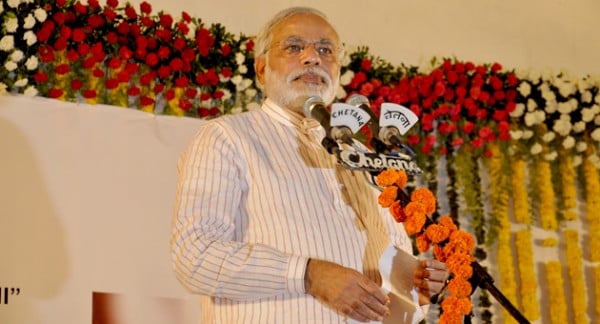
Photo Credit: Global Panorama via Flickr
Indian Prime Minister Narendra Modi’s invitation to Barack Obama to attend India’s Republic Day on Monday was not only a great honor bestowed upon the U.S. president but also packed with implications for Chinese foreign policy and influence in the Asia Pacific. Obama, the first U.S. president to be welcomed as the chief guest at India’s annual Republic Day parade, spoke of welcoming a “greater role for India in the Asia Pacific” and argued for freedom of navigation in the disputed waters of the South China Sea – an indirect reference to past aggressive actions by Beijing to control sovereignty over 90 percent of the East and South China Seas. Following lengthy discussions on Sunday, Modi and Obama also signed a new 10-year defense pact, which calls for increased military and maritime cooperation, and agreed to cooperate on the construction of an aircraft carrier.
Clearly, Obama’s intent on forging closer ties to democratic India is to garnish greater influence in the Asia Pacific to counter a rising China. Whether one calls the diplomatic outreach “the U.S. pivot to Asia” or in the words of Beijing “containment,” the Obama administration is keen to maintain and grow its hard and soft power in the region.
Yet for all the pomp, mutual agreement and good feelings between Obama and a welcoming Indian government, whose prime minister is more hawkish toward China than his predecessor, Modi will be loathe to alienate a cash-rich China, whose ability to build and finance much-needed infrastructure is proven.
Like a jealous lover, Beijing was quick to downplay the event, with China’s state news agency Xinhua calling the meetings between the two leaders a “superficial rapprochement”, and pointing out “hard differences” on many issues remain. The commentary on Xinhua called Obama’s visit “more symbolic than pragmatic, given the long-standing division between the two giants, which may be as huge as the distance between them.”
Chinese pundits would probably draw comfort from events of last November, when Modi invited Chinese President Xi Jinping to share his birthday dinner in his home state of Gujarat. Yet for all the warm feelings and economic benefits Beijing can shower on India, New Delhi remains eternally wary of the dragon next door, with whom it fought a brief and bloody war at the Himalayan border in 1962, and where Chinese troops are regularly stationed. New Delhi is also fraught with anxiety over events in the South China Sea and Beijing’s creation of a “string of pearls” in the Indian Ocean (a network of military and commercial relationships), which has traditionally been New Delhi’s sphere of influence. The supply of oil from tankers is critical for the economic growth of India, and New Delhi will want assurances on freedom of navigation for the tankers that move through the Indian Ocean.
As much as Beijing can bring in economic benefits to India, New Delhi will not rely on only one dance partner — and will remain heavily influenced by its policy of nonalignment during the Cold War. This weekend, India’s foreign minister Sushma Swaraj plans to visit China – during which discussions are expected to also include Russian Foreign Minister Sergei Lavrov, whose country provided much of the military might on display during the National Day parade. Just last week, Russian Defense Minister Sergei Shoigu visited New Delhi to negotiate over the supply of Russian-made fifth-generation fighter jets to India.
Despite a long history of defense relations between India and Russia, current bilateral trade between the two nations is some 10 percent of the India-U.S. trade, and the U.S. has recently overtaken Russia as India’s biggest arms supplier. India will not be beholden to any one nation, but will seek maximum economic and military benefit by playing China, Russia and the U.S. off against each other, while increasing its defense capabilities. How the substantial economic trade, military might and soft power of the U.S. stacks up against the deep pockets of Beijing should prove interesting to watch in the months to come.